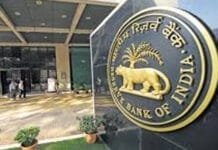INVC NEWS
Mumbai : Get insights into India’s economic landscape as ICRA Ratings forecasts an impressive 8.5% GDP growth rate for Q1. Uncover the influences shaping this positive outlook.
The economic landscape of India is undergoing a significant transformation, with the Gross Domestic Product (GDP) growth rate poised to witness a remarkable upswing. According to a recent report by ICRA Ratings, India’s GDP growth rate is anticipated to surge to an impressive 8.5 percent during the first quarter of the current financial year (April-June). This projection paints a picture of economic resurgence, building upon the foundation laid in the previous quarter, where the growth rate stood at 6.1 percent.
A Positive Shift Driven by Multiple Factors
ICRA Ratings attributes this positive shift in the growth trajectory to a confluence of factors. The report highlights the favorable base effect that is expected to play a pivotal role in propelling the economy forward. Additionally, a marked improvement in the services sector is anticipated to be a key driver of this growth surge. The services sector, a significant contributor to India’s GDP, is poised to rebound and make notable strides, further reinforcing the nation’s economic resurgence.
Divergence from Central Bank Projections
The Reserve Bank of India (RBI), the country’s apex financial institution, has also weighed in on the growth projections. It has put forth a growth rate projection of 8.1 percent for the same April-June 2023 quarter. While the RBI’s projection is optimistic, ICRA Ratings’ estimate surpasses this figure, indicating a higher level of optimism in the economic potential of the country.
Insights from ICRA’s Chief Economist
Aditi Nayar, the Chief Economist at ICRA Ratings, offers invaluable insights into the trajectory of India’s economic growth. While the first half of the current financial year appears promising, Nayar highlights potential challenges in the latter half. Factors such as erratic rainfall patterns, a narrowing of commodity price differentials in comparison to the previous year, and a deceleration in government capital expenditure could present challenges that need to be navigated.
Nayar also introduces a nuanced perspective by acknowledging that the looming parliamentary elections could potentially impact the growth trajectory. As India approaches this significant political event, economic policies and strategies may undergo shifts that could influence the GDP growth rate.
A Comparative Analysis: ICRA vs. RBI
One of the intriguing aspects of these growth projections is the divergence between ICRA Ratings and the RBI. While ICRA forecasts a GDP growth rate of 8.5 percent for the April-June quarter, the RBI’s projection is slightly more conservative at 8.1 percent. This variance in estimates underscores the complexity of economic forecasting and the multiple variables that come into play when predicting growth trajectories.
Looking Ahead: Fiscal Year 2023-24
In terms of a broader perspective, ICRA Ratings maintains its growth forecast for the fiscal year 2023-24 at 6 percent. This projection, while promising, is notably lower than the RBI’s estimate of 6.5 percent. This divergence in forecasts underscores the dynamic nature of economic forecasting and the challenges in predicting long-term growth patterns.
Conclusion
In conclusion, the economic landscape of India is poised for a promising start in the first quarter of the current financial year. With a projected GDP growth rate of 8.5 percent, as estimated by ICRA Ratings, the country is on track to build upon the momentum generated in the previous quarter. While challenges and uncertainties persist, the optimism surrounding India’s economic resurgence is palpable.
As the nation navigates through the interplay of economic variables, political events, and global dynamics, these growth projections serve as a guiding light for policymakers, businesses, and stakeholders alike. The nuanced insights provided by ICRA’s Chief Economist Aditi Nayar offer valuable context, shedding light on both the potential opportunities and challenges that lie ahead.













